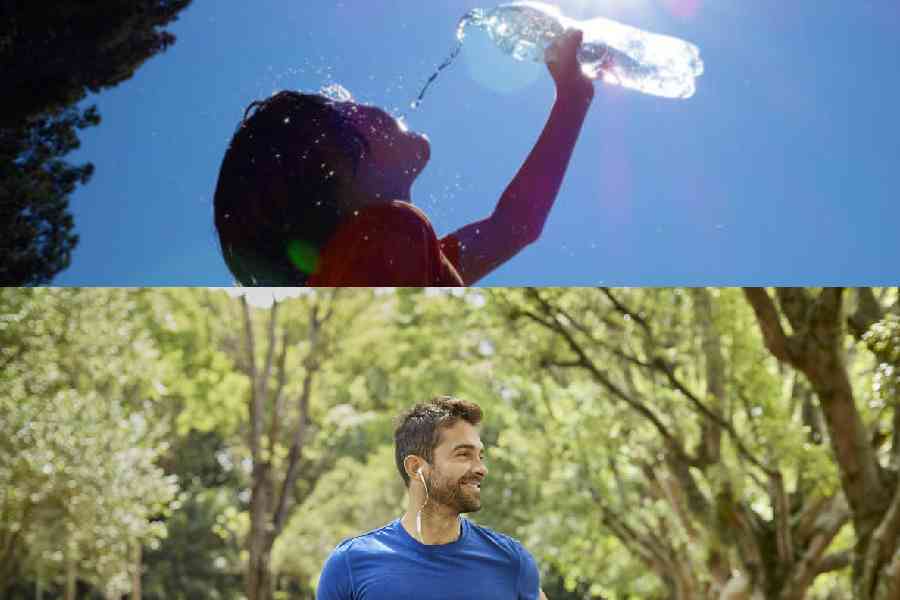With this summer set to be exceptionally hot in India, it’s crucial to approach your workout routine smartly to ensure safety and maximise results. Here are some tips to help you make the most of your workouts, whether you’re training indoors or braving the outdoor heat.
Understanding how heat affects exercise
During exercise, your body naturally heats up and it relies on mechanisms like sweating and increased blood flow to cool down. When faced with extreme heat, these processes are intensified, putting extra strain on your body and potentially causing fatigue, decreased performance levels, or even heat-related issues.
Choosing the right environment and timing for training
Indoors: Opting for indoor training is the safest choice when dealing with extreme heat. Select well-ventilated or air-conditioned settings like gyms where you can manage environmental conditions effectively. When working out at home, make sure the room is kept cool, especially during the hottest times of the day.
Outdoor exercise: If you must exercise outdoors, adjust your schedule to work out during cooler hours, like early mornings or late evenings. Opt for shaded paths or parks instead of hot asphalt to reduce heat exposure.
Staying hydrated
Proper hydration is crucial not only for performance but also for safety when training in hot conditions.
Pre-workout: Start your workout well-hydrated by drinking at least 500ml of water about two hours beforehand.
During exercise, stay hydrated by taking regular sips of water or an electrolyte-infused beverage to replenish lost salts from sweating. After the workout, continue hydrating and include sodium-rich foods to retain fluids and aid in recovery.
Nutrition support
Your nutrition should focus on enhancing exercise performance and recovery, especially in hot weather.
Energy fuel: Prioritise consuming carbohydrates for energy and opt for light, nutrient-rich foods that won’t weigh down your digestion.
Recovery nutrients: Proteins play a key role in repairing muscles, while antioxidants found in fruits and vegetables help counteract the oxidative stress caused by exercise and heat.
Fat intake: Including healthy fats in your diet is essential to support overall cellular function and maintain energy levels.
The importance of quality sleep
Getting good-quality sleep is essential for recovery, especially in challenging circumstances. To improve sleep quality during hot weather, choose...
Cool sleeping environment: Use air-conditioning or fans in your bedroom, choose breathable bedding, and consider taking a cool shower before bedtime.
Consistent routine: Stick to a regular sleep schedule to help your body’s recovery processes stay on track.
Strengthening mental resilience
Building mental strength is just as crucial as physical preparation when training in extreme conditions.
Visualisation techniques: Visualise yourself successfully overcoming challenges during workouts to mentally prepare for them.
Flexible goal setting: Be realistic and adaptable with your training goals when faced with extreme conditions. It’s okay to adjust intensity or duration based on the heat of the day.
Focus on progress: Celebrate small wins as they are significant achievements under tough conditions.
Acknowledge and celebrate these achievements to stay motivated and strengthen your mental resilience.
Here’s a comprehensive fitness workout regimen designed for diverse groups in extreme heat environments.
General principles
Hydration: Begin hydration strategies before, during, and after workouts. Encourage drinking water and electrolyte-rich drinks to prevent dehydration and electrolyte imbalance.
Acclimatisation: Gradually increase exposure to heat to help the body adapt. Start with shorter, less intense sessions and progressively increase duration and intensity over 10–14 days.
Cooling mechanisms: Use cooling aids like cool vests, misting fans, or ice packs pre- and post-workout to help manage body temperature.
Timing: Schedule workouts during cooler parts of the day, typically early morning or late evening, to avoid peak heat times.
Sun protection: For outdoor activities, use sunscreen, wear light-coloured, breathable clothing, and utilise shaded areas when possible.
Main workout (30–40 minutes) for professional athletes
Strength training: Focus on core exercises such as squats, deadlifts, and presses using moderate weights to maintain strength without excessively raising body temperature.
High-Intensity Interval Training (HIIT): Short bursts (for example, 20 seconds sprint, 40 seconds rest) to maximise efficiency and limit heat exposure.
Main workout for semi-professional athletes
Circuit training: Combines strength and endurance with stations set up to work on different muscle groups with minimal rest in between.
Moderate-intensity cardio: Such as running or cycling at a steady but manageable pace.
Main workout for youth athletes
Skill-based drills: Focus on agility, balance, and coordination through fun, engaging drills that also enhance athletic skills.
Games and activities: Incorporate games that involve running and team play to keep the workouts enjoyable.
Main workout for the general population
Mixed modalities: Combine light strength training with body weight exercises and low-intensity cardio. Example circuit: push-ups, air squats, and gentle jogging or walking.
Cool down (10 minutes)
All groups: Gentle stretching and breathing exercises help bring the heart rate down gradually. Indoors or in a shaded area outdoors.
Cooling down techniques: Use cold towels or ice packs, especially for the neck and wrists.
Safety and supervision
Always have a trained professional supervising workouts to monitor safety and adjust workout parameters as needed based on weather conditions and participant feedback. Safety should always be the priority, with modifications ready when necessary.
Training in extreme heat demands a well-rounded approach that considers optimal training schedules and locations, smart hydration practices, tailored nutrition, ample rest, and strong mental fortitude. As someone who supports your high-performance journey, I urge you to tune into your body’s signals, prioritise safety, and adjust your training methods to not just maintain but excel in challenging conditions. Remember, the key to success in summer training lies in preparation and adaptability. Keep cool, stay hydrated, and forge ahead with confidence.
Anwar Wahhab is a Mental Performance Mastery Coach and a Bioprint practitioner.
You can reach him at anwarwahhab.awefitness@gmail.com
